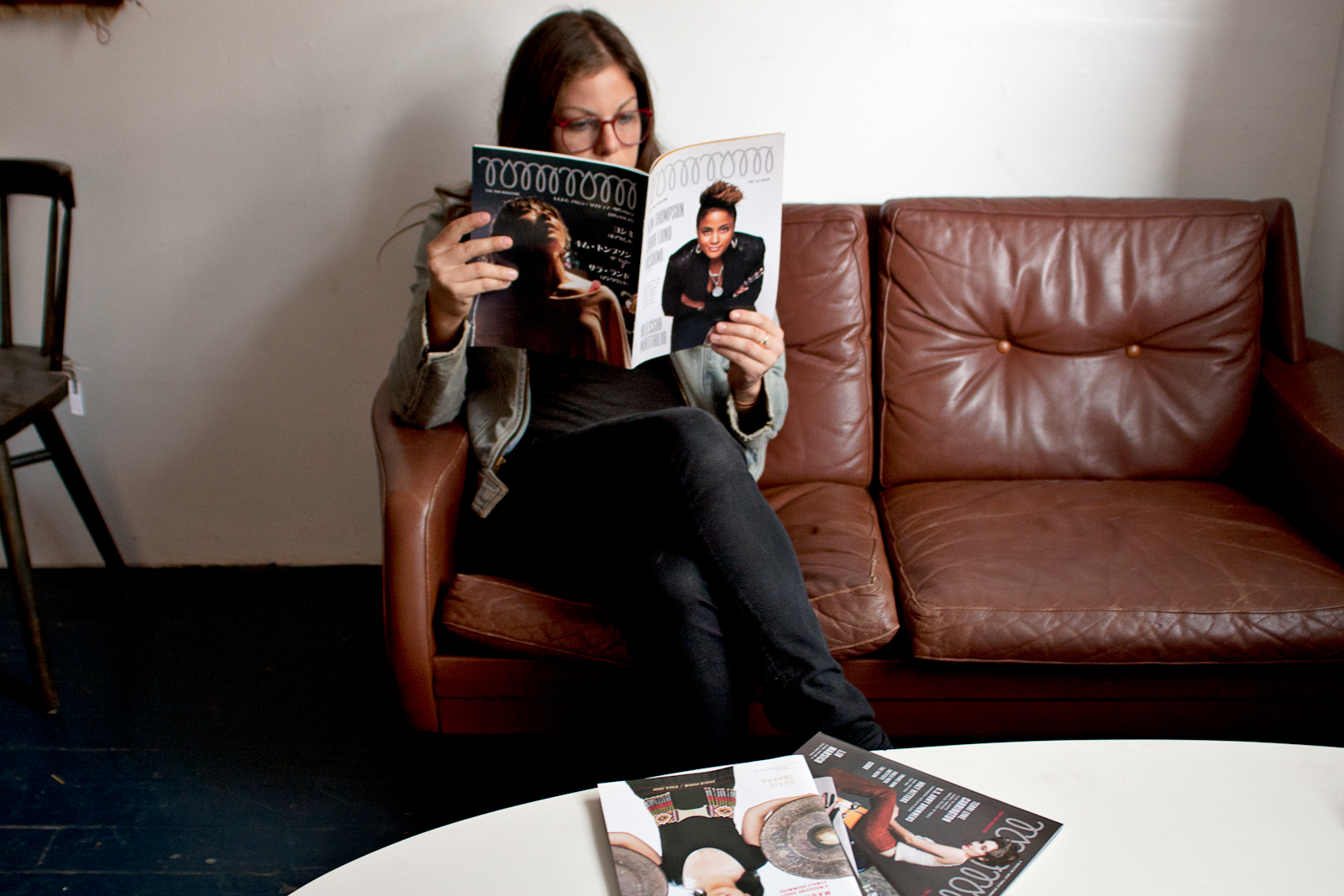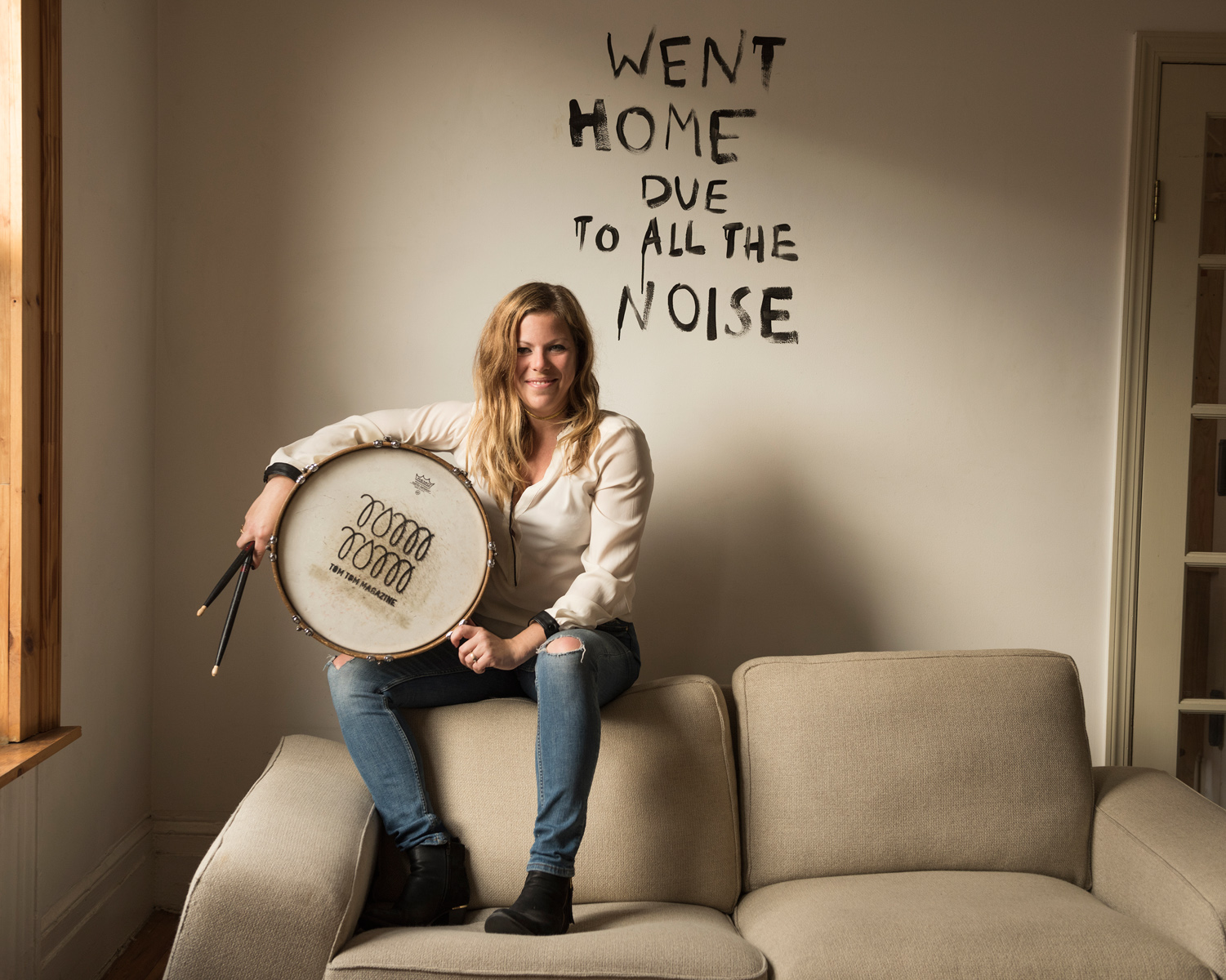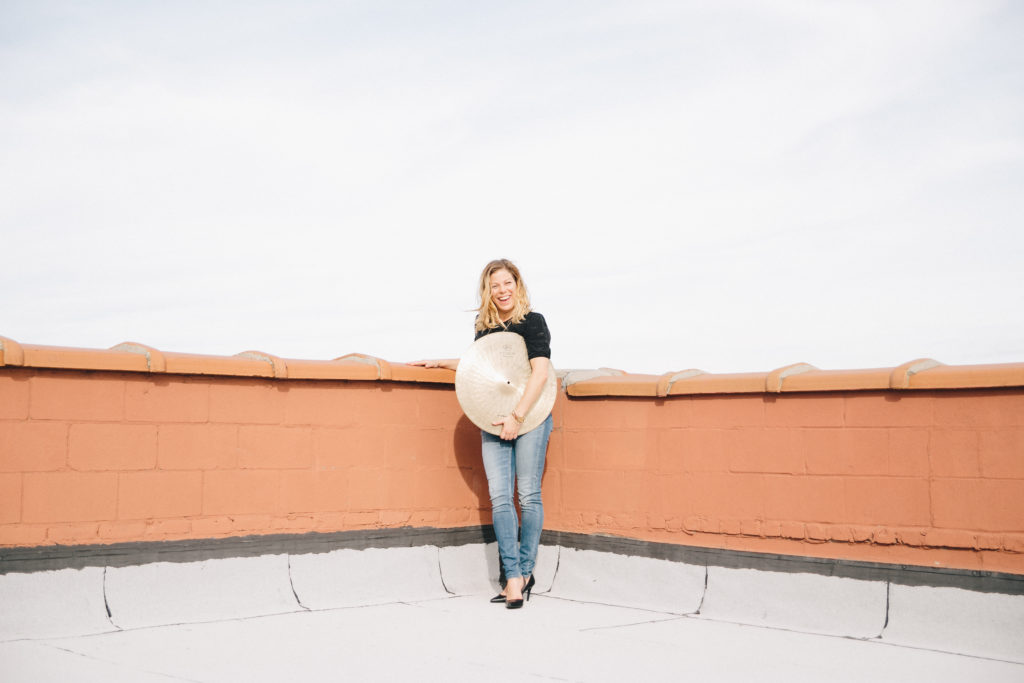As Tom Tom Magazine turns 10 this year, we look back at the magazine’s origin story and how it has survived the quickly changing media landscape for an entire decade. Tom Tom will celebrate its anniversary by re-releasing an issue each week in 2019; you can buy each issue at our shop and read them online on Issuu, the digital publishing and content discovery platform.

When drummer/beat programmer Mindy Abovitz first had the idea for Tom Tom Magazine, she was working at every place she could in the music industry in New York City—a music store (Main Drag Music), a radio station (East Village Radio), a venue (the Cake Shop)—but it was volunteering at the Willie Mae Rock Camp for Girls in New York City that really inspired her to connect and create with other female musicians.
This awakening led her to quit a job as a sound engineer. It also led her to search for other people like her. When she would google “girl drummer,” or “female drummer,” she would not get many search results that accurately reflected the search. She got back results that were demeaning—women drummers in bikinis standing beside a drum kit or articles titled, “Can Girls Play the Drums?” She began to wonder how she could influence those results by creating content for and by female drummers.
“Somehow volunteering at rock camp was the worm that got into my head and would never get out. Those two weeks every summer gave me so much confidence and created such a standard of what treating someone—a girl or woman—with dignity in the music industry should look like,” Abovitz said.
“I was convinced that someone somewhere else in the world was running a magazine about female drummers, and that I would find them, and then work for them, and help them,” Abovitz said. “That was not the case—that became clear about nine months in to having a blog and then a website. When I told people about my idea to start a magazine dedicated to female drummers, hundreds of talented, badass humans said they loved it and wanted to help. It became very obvious that we needed a home for female drummers.”
Tom Tom Magazine launched its first print issue in Brooklyn, New York, in 2009, and ever since its second issue, it has simultaneously published online using the digital publishing platform Issuu.

“I chose to use Issuu, and continue to use it today, because part of our mission is to reach people everywhere, all over the world, and to reduce the barrier of entry to reading our magazine,” Abovitz said. “Issuu allows anyone anywhere to read it for free, and the magazine is displayed in a sleek, flipbook style that stays true to the print magazine. They already have a large global built-in audience looking for great content and they make it easy to distribute our content on social media or even get featured on Apple News.”
Abovitz goes on to say how easy Issuu makes it to track the demographics of readers so that the magazine can better serve them.
“What Issuu has allowed us to do is have that digital demographic background like all social media platforms offer you now. So now we’re able to see who is reading it, how long are they reading it, where are they from, how old are they. All of those things are facts that we need. That’s another major thing,” Abovitz said. “ Issuu is constantly evolving so we’re able to benefit from their growth. They’re just introduced stories which is where they take articles from our magazine and make it beautiful and shareable on social media which is huge for anyone who’s ever tried to convert articles to Instagram or to Web. It’s so laborious and it doesn’t always look good. But Issuu has a plugin play that makes that possible. Those are my favorite things.”
Issuu always stays up-to-date with web standards and makes sharing to social media a seamless experience. Another fun new feature is the GIF tool that enables users to animate their content in innovative and eye-catching ways.
Abovitz said she also appreciates that Issuu makes the magazine accessible to readers no matter where they are.
“We don’t charge people to read it online, and we launch it online almost the exact same time as the print issue hits newsstands,” Abovitz said. “We could chose to sell the digital version as well on Issuu, but we don’t. For us making money, that doesn’t make any sense. But that’s one way we are true to our mission. Issuu has allowed us to be authentic in that way.”
Another part of Tom Tom Magazine’s mission statement is to cover female and nonbinary drummers all over the world who play every kind of music. The magazine features not only technically skilled drummers but also drummers who are self-taught and less experienced. Abovitz said she hopes this inspires girls and women to feel that they can do and be anything they want with fewer caveats.
“Some women and girls have been told directly, ‘you cannot do this. This is not ladylike, or this is illegal,’” Abovitz said. “Or more subtly, never being given the confidence to think you can be loud, you can be proficient, you can be creative, you can be strong, and all the things that being a drummer require.”

Lisa Schonberg, a writer, drummer, and activist who has worked with Tom Tom since its inception, expounds on how Tom Tom Magazine has had an impact on its readers and the culture at large.
“Before Tom Tom Magazine existed, there was close to zero attention for female-identified drummers, percussionists, and beat-makers in music magazines,” Schonberg said. “And when they were paid attention to, they were treated as the exception and/or made into a spectacle. Tom Tom has single-handedly changed this by creating a space in print, digitally, and through social events, where female-identified rhythm-makers are not only recognized but celebrated. It’s essentially called out the drum industry’s attempted gendering of drums as bullshit. We still have work to do, but we’ve come a long way.”
Besides being a print and digital magazine, Tom Tom started a drumming contest for female drummers called Hit Like a Girl that is now in its eighth year. In 2013, the staff began The Oral History of Female Drummers, an event in which several female drummers perform throughout a major museum, such as MOMA PS 1 and the Brooklyn Museum. Tom Tom has a podcast called The Beat and the Pulse and produces videos of drum lessons and interviews with drummers. They also launched a drum shop collaboration with The Beat NYC.
Abovitz said she is heartened to see some of her colleagues starting magazines of their own like She Shreds (a magazine for female guitarists and bassists), Got a Girl Crush, and Womanly (a health magazine for women and nonbinary people started by former Tom Tom staffer Attia Taylor).
“I hope we crack open the music industry, and I hope that people create their own media companies, and that people do whatever it is that they want to do in life. And they think about Tom Tom in their subconscious,” Abovitz said. “I’d like Tom Tom to be remembered as a glimmer of hope and a possibility for one person, or a group of people, to see that it is possible to effect change on a large scale.”
Rebecca DeRosa is a writer, drummer, and yoga teacher living in the Catskills with her husband and black Halloween kitty.
This article was sponsored by Issuu who has been hosting our magazine’s digital copies since 2010! Read all the back issues here.


